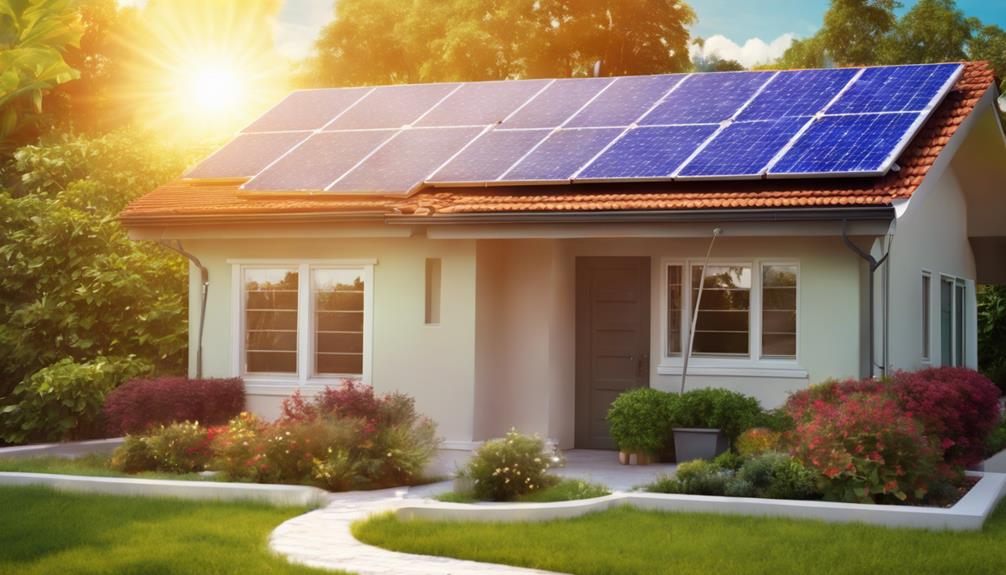
In recent years, solar energy has gained immense popularity as a sustainable and eco-friendly alternative to traditional energy sources. Among the various technologies available, solar panels stand out as the most effective way to harness solar power. In this comprehensive guide, we will explore the ins and outs of solar panels, their benefits, types, installation process, and maintenance tips to help you make an informed decision about your energy needs.
Understanding Solar Panels: What Are They and How Do They Work?
Solar panels, also known as photovoltaic (PV) panels, are devices that convert sunlight into electricity. They are made up of many smaller units called solar cells, typically composed of silicon, which generate direct current (DC) electricity when exposed to sunlight. This DC electricity is then converted into alternating current (AC) by an inverter, making it usable for your home or business. Solar panels come in various sizes and types, but all function on the same basic principle: capturing sunlight and transforming it into energy.
The Benefits of Solar Panels: Why Go Solar?
Investing in solar panels provides numerous advantages. First and foremost, solar energy is renewable and sustainable, meaning it won’t run out as long as the sun shines. This transition to solar energy can significantly reduce your electricity bills, as you’ll be generating your own power. Additionally, many governments offer incentives, tax credits, and rebates for solar panel installations, making it a financially savvy decision. Lastly, utilizing solar panels significantly reduces your carbon footprint, contributing to a cleaner environment and combating climate change.
Types of Solar Panels: Which One is Right for You?
When considering solar panels, it’s crucial to understand the different types available in the market. The three most common types are monocrystalline, polycrystalline, and thin-film solar panels. Monocrystalline panels are known for their high efficiency and sleek design, making them a popular choice for residential installations. Polycrystalline panels tend to be slightly less efficient but are often more affordable. Thin-film solar panels are lightweight and flexible, making them suitable for unique applications, though they generally have lower efficiency rates. Evaluating these options based on your energy needs, budget, and space availability will help you make the right choice.
Solar Panel Installation: What to Expect
The installation process for solar panels can seem daunting, but understanding the steps involved can ease your concerns. Typically, the process begins with a site assessment by a professional installer. They will evaluate your property’s solar potential and design a customized system tailored to your needs. Once the design is approved, the installation team will mount the solar panels on your roof or property, connect them to the inverter, and perform necessary electrical work. Finally, the system will be inspected and connected to the grid, allowing you to start generating your own electricity.
Solar Panel Maintenance: Keeping Your System in Top Shape
One of the appealing aspects of solar panels is their low maintenance requirements. However, periodic maintenance is essential to ensure optimal performance. Regularly cleaning your panels to remove dirt, dust, and debris will help maximize their efficiency. Inspecting the system for any signs of damage or wear, such as cracks or loose connections, is crucial. Additionally, consider scheduling an annual professional inspection to ensure everything is functioning correctly. Many solar panel manufacturers offer warranties, so familiarize yourself with the terms and conditions to protect your investment.
The Financial Aspect of Solar Panels: Cost and Savings
The initial investment for solar panels can vary widely based on factors such as system size, type, and installation complexity. On average, residential solar panel systems can cost between $15,000 and $30,000 before any incentives or rebates. However, with federal tax credits, state incentives, and financing options, many homeowners find that the upfront costs are manageable. Over time, the savings on your electricity bills can offset the initial investment, and many systems pay for themselves within 5 to 10 years. Additionally, increasing property values and decreasing reliance on fossil fuels make solar panels a financially sound choice.
Common Misconceptions About Solar Panels: Debunking Myths
Despite the growing popularity of solar panels, several misconceptions still persist. One common myth is that solar panels only work in sunny climates. In reality, solar panels can generate electricity even on cloudy days, although their efficiency may be reduced. Another misconception is that solar panels require a lot of maintenance. As mentioned earlier, they are relatively low maintenance compared to other energy systems. Finally, many people believe that solar panels are too expensive. With various financing options and incentives available, solar energy is becoming more accessible and affordable for homeowners.
Conclusion: The Future of Energy is Solar
As we move toward a more sustainable future, solar panels play a crucial role in reducing our dependence on fossil fuels and lowering greenhouse gas emissions. By understanding the benefits and types of solar panels, the installation process, maintenance requirements, and financial implications, you can make an informed decision about going solar. Whether you’re looking to save on energy costs, increase your property value, or contribute to environmental sustainability, investing in solar panels is a step in the right direction. Embrace the power of the sun and join the growing community of solar energy users today!





